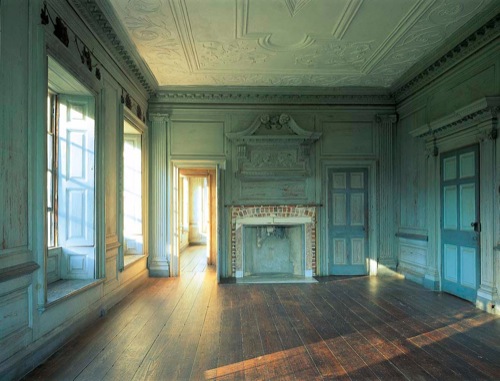
Courtesy Drayton Hall
Extraordinary stories of wealth, extraordinary stories of war, extraordinary stories of slavery — there may be no other destinations that feature more bona fide human drama than Southern plantations. Although each is distinct, all offer poignant history in a manner that can’t be replicated in a book or a classroom.
When your group is touring the South, a visit to one of the following fine historic plantations will give your travelers a chance to experience the architecture, the history and the allure of those great dramas for themselves.
Drayton Hall
Charleston, South Carolina
You won’t find amateur history buffs guiding tours at Charleston’s famous Drayton Hall. Because of the historic significance of the home, the only surviving plantation house on the Ashley River, the interpreters are all paid professionals.
“While most have a background related to history or architecture, all go through rigorous training,” said Kristine Morris, director of communications.
Circa 1738, Drayton Hall is the oldest, nonrestored plantation house in America still open to the public and the nation’s earliest example of fully executed Palladian architecture.
“It’s never been modernized with central heating or air conditioning, so there can be no interior belongings. The focus here and what is brought to life are the layers of architecture and why things were built a certain way. There are details that can’t be found anywhere else,” said Morris.
Groups hear stories of race, culture and sacrifice that took place inside those walls that survived the American Revolution, the Civil War and a major earthquake and hurricane. On the grounds, described as some of the most significant undisturbed landscape in America, African-American history is discussed along the marsh walk. An African-American cemetery, one of the oldest documented cemeteries of its kind in the country, is on the property.
“Depending on when you are there, you might see descendants of those buried here visiting their passed loved ones,” said Morris.
Morris added that the story of Drayton Hall is reinforced at the museum shop. “The illustrations, prints, photography and more are not your typical gift shop items.”
www.draytonhall.org
Pebble Hill Plantation
Thomasville, Georgia
Pebble Hill Plantation was purchased as a hunting and shooting plantation; hunting and shooting were favorite hobbies of the rich and famous in the late 1800s.
“Melville Hanna, from Cleveland, Ohio, purchased the plantation in 1896,” said Barbara Cohenour, museum manager. “Hanna was associated with people like Rockefeller and those who made their fortunes in oil, coal, iron and steel. Like many in that class, Hanna came to the South to escape the cold winters.”
Although much of the region was depressed in that era, Thomasville became a thriving destination for those industrialists. Pebble Hill reflects the lifestyle of the Hannas and their esteemed guests, with 3,000 acres, a 26,000-square-foot main house and structures that include a pump house, a nurse’s station, a firehouse, a carpenter’s shop, a dog hospital, a log cabin school and even a replica of Noah’s Ark.
“Everything is original, including the dishes, pictures, silverware, wallpaper, marble floors and the 19th-century English Empire furniture,” said Cohenour. “There are 30 sets of china in the home, and the dining room table is set for 14. Many of the 16 bedrooms are now art galleries, as the family collected nature and sporting art, including 33 original Audubon prints.”
Cohenour suggested that groups visit between October and May when the grounds are “glorious” and the temperatures are perfect to visit the show horses in the stables and the collection of cars and carriages.
Natchez, Mississippi
With more than 1,000 structures listed on the National Register of Historic Places, Natchez, Mississippi, enjoys some of the South’s greatest riches in historic homes and plantations. Sally Durkin, media liaison for the Natchez Convention and Visitors Bureau, recommends three must-see plantations for groups visiting Natchez.
“Longwood, built in 1850, is considered the crown jewel,” said Durkin. “When the Civil War was declared, the Northern carpenters and painters literally dropped their saws and hammers, picked up their rifles and bayonets, and jumped on their horses to fight for the Union army — never to return. Everything remains just as it was. It’s such an emotional experience to see it.”
Rosalie, a Federal-style home located on a bluff that offers views of the Mississippi River, has served as a French fort, a Union army headquarters and home to a wealthy lumber mill owner. Groups that tour the home will see a remarkable collection of original furnishings.
“The home is renowned for the Belter furniture, completely carved out of Rosewood,” said Durkin.
Melrose Plantation offers fascinating African-American history beginning in 1742 with a slave of African descent who had a 19-year relationship and 10 children with a Frenchman. One of those children eventually received a land grant on what would become Melrose Plantation, and that family, representing free people of color for four generations before the Civil War, is still revered as a founding family in Natchez.
Melrose Plantation includes the main house, the Yucca House, the Ghana House, the Africa House and several outbuildings, all significant in their history and their French and African design.
www.visitnatchez.org









